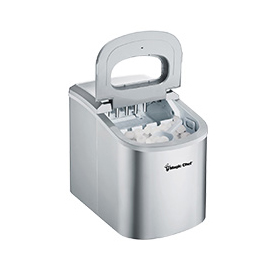Understanding Cellulose Ether Focus on Hydroxyethyl Methylcellulose (HEMC)
Cellulose ethers are a diverse group of compounds derived from cellulose, an abundant natural polymer found in plant cell walls. Among the various cellulose ethers, Hydroxyethyl Methylcellulose (HEMC) has gained significant attention in various industries due to its unique properties and versatile applications. This article aims to explore the characteristics, production methods, and applications of HEMC, highlighting its importance in modern formulations.
What is Hydroxyethyl Methylcellulose (HEMC)?
Hydroxyethyl Methylcellulose is a non-ionic, water-soluble cellulose ether with a structure that consists of hydroxyethyl and methyl groups attached to the cellulose backbones. The incorporation of these groups endows HEMC with unique physicochemical properties, such as thickening, film-forming, and stabilizing abilities. HEMC is known for its good solubility in cold water, and it forms viscous solutions, making it an ideal choice for various applications across different industries.
Production of HEMC
The production of HEMC typically involves the etherification of cellulose. This process entails introducing hydroxyethyl and methyl groups into the cellulose chains. The cellulose is first treated with alkali to activate the hydroxyl groups and then reacted with ethylene oxide and methyl chloride under controlled conditions. The degree of substitution, which represents the average number of hydroxyethyl and methyl groups substituted per anhydroglucose unit, can be adjusted to tailor the properties of HEMC for specific applications.
Properties of HEMC
HEMC possesses an array of beneficial properties that make it suitable for various uses
1. Thickening Agent HEMC is widely recognized for its effective thickening ability, allowing it to enhance the viscosity of aqueous solutions. This property is particularly useful in paints, coatings, and adhesives.
2. Stabilizing Agent HEMC can stabilize emulsions and suspensions, preventing the separation of ingredients. This is crucial in formulations such as lotions, creams, and food products.
3. Film-Forming Ability The film-forming characteristics of HEMC enable it to create a cohesive film on surfaces, making it invaluable in cosmetic and pharmaceutical applications where controlled release is essential.
cellulose ether hemc

4. Water Retention HEMC exhibits excellent water retention capabilities, which is particularly beneficial in construction materials like cements and mortars, enhancing workability and extending the drying time.
5. Biocompatibility As a cellulose derivative, HEMC is generally regarded as safe and non-toxic, making it suitable for applications in food and pharmaceuticals where biocompatibility is essential.
Applications of HEMC
Given its versatile nature, HEMC finds applications across multiple sectors
1. Construction Industry In the construction industry, HEMC is commonly used as a thickener and water-retention agent in cement-based materials. Its ability to improve the workability of mortars and adhesives leads to enhanced durability and performance of construction products.
2. Cosmetics and Personal Care HEMC acts as a thickener and emulsifier in various cosmetic formulations, such as creams, lotions, and gels. Its smooth texture and ability to retain moisture make it a popular ingredient in hydrating products.
3. Pharmaceuticals In the pharmaceutical sector, HEMC is utilized in drug formulations as a binder and film-forming agent for controlled-release applications. Its solubility and viscosity control help improve the efficacy of active pharmaceutical ingredients.
4. Food Industry HEMC is employed in the food industry as a food additive for thickening and stabilizing sauces and dressings. Its safety and effectiveness make it a favorite among food manufacturers.
5. Paints and Coatings HEMC is used to enhance the viscosity and stability of water-based paints and coatings, improving their application properties and ensuring a uniform finish.
Conclusion
Hydroxyethyl Methylcellulose (HEMC) exemplifies the multifunctional capabilities of cellulose ethers. Its diverse properties enable it to serve crucial roles in industries ranging from construction to cosmetics. As demand for sustainable and effective ingredients continues to rise, HEMC’s natural origin and versatility position it as a valuable player in formulation science. Understanding and harnessing the potential of HEMC can lead to innovative products that meet the evolving needs of various markets.
-
Rdp Powder: Key Considerations for Wholesalers in the Building Materials IndustryNewsJul.08,2025
-
Key Considerations for Wholesalers: Navigating the World of Hpmc - Based ProductsNewsJul.08,2025
-
Hpmc Detergent: Key Considerations for WholesalersNewsJul.08,2025
-
Key Considerations for Wholesalers: China Hpmc For Tile Adhesive, Coating Additives, Concrete Additives, and MoreNewsJul.08,2025
-
Crucial Considerations for Wholesalers: Navigating the World of Construction MaterialsNewsJul.08,2025
-
Key Considerations for Wholesalers Sourcing Additive For Cement, Additive For Concrete, Additive For Putty from Additive Manufacturer Shijiazhuang Gaocheng District Yongfeng Cellulose Co., Ltd.NewsJul.08,2025




